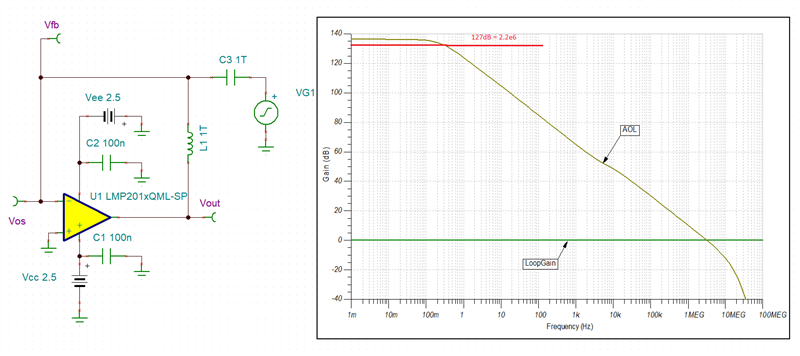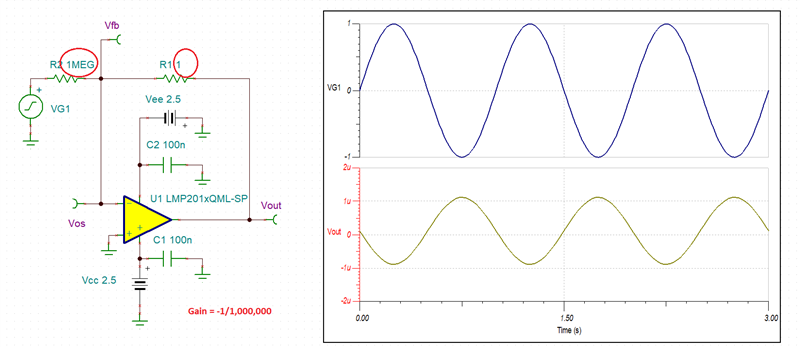Hi experts
I am looking at the LMP2012QML-SP datasheet trying to understand the minimum (positive and negative) closed loop gains this device can be used for.
Can someone provide that information?
Thanks,
Jim B
This thread has been locked.
If you have a related question, please click the "Ask a related question" button in the top right corner. The newly created question will be automatically linked to this question.
Hi experts
I am looking at the LMP2012QML-SP datasheet trying to understand the minimum (positive and negative) closed loop gains this device can be used for.
Can someone provide that information?
Thanks,
Jim B
Hi Jim,
Agreed it is not explicitly stated, but, the phase margin spec. is referring to unity gain:

So, no problem using at unity or in an attenuating configuration.
Let me know if this clears it up.
Regards,
Mike
Jim,
Adding to Mike's comment, there is no specific maximum positive or negative close-loop gain in any op amps - the only limitation of the close-loop gain is the actual DC open-loop-gain (AOL). For a typical AOL of 130dB, the maximum positive close-loop gain would be -3dB point resulting in the maximum 127dB (G=10^(127/20) or G=2,238,721 while maximum negative gain would be -9dB point resulting in the maximum negative gain of 121dB (G=1,122,018). Of course, this is not practical in a real life because in such case the gain error would be ~30% and the input voltage offset would be amplified by the enormous close-loop gain resulting in the output slamming against one of its rails.

The minimum positive gain is a buffer (G=1) unless one additionally attenuates the signal at the output. But there is no minimum negative gain (see below). However, practical limitation will come from the input noise and the offset voltage of the system - you can't get the signal below the noise floor.
